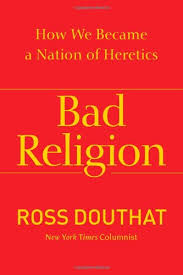Stephen Smith looks at Thomas More's Utopia in The Wall Street Journal, in its weekly Masterpiece column:
For some, "Utopia" provides a witty education in human nature for citizens and leaders, especially those who want to be "well and wisely trained." For others, "Utopia" heralds the glorious liberty of communism to come, or so the makers of Moscow's Memorial Obelisk thought when they engraved More's name there in 1918. In More's own words, Utopia is "a truly golden book, no less profitable than delightful," but what kind of education does this book really offer? While the word "Utopia" has long been shorthand for any ideal world, a careful reading of More's book offers a complex, and better, view.
Born in London in 1478, More distinguished himself in family life and friendship, in professional work and politics. Called by Erasmus "the only true genius in England," More published "Utopia" in Latin in 1516. He then entered King Henry VIII's service, and eventually became Lord Chancellor. During his maturity, the drama of Henry's divorce and the Reformation engulfed England. A supporter of neither, and a defender of English law, ancient liberty and the Catholic faith, More resigned his public office in 1532 after a controversial tenure. Later imprisoned, he was convicted of treason and sentenced to death in 1535. His last words—"I die the king's good servant, and God's first"—attest that he had served his old friend Henry with integrity throughout the storms.
Smith, a professor in English Literature at Hillsdale College, provides a summary of the conversation at the heart of Utopia and then concludes:
Surprisingly, "Utopia" concludes not with a cross-examination of Raphael, but with More thinking to himself that Utopia sounds "really absurd," a point often missed by those who wish to embrace its radical policies. Unsure that Raphael can "take contradiction in these matters," More decides to lead him to dinner instead. For Raphael, Utopia is over, and he may have placed himself beyond the reach of friendship, though More's charity creates hope. For readers, we are left with the challenge of responding to Raphael's claims and examining the sources of our own thoughts and first principles—and indeed, the clarity of our own self-knowledge. For Thomas More, his truly golden meditation on service and Utopia would meet its end only years later, alone atop a scaffold on Tower Hill.
Read the rest here. That last paragraph reminded me of Pope Benedict XVI's address to Politicians, Diplomats, Academics and Business Leaders in Westminster Hall, City of Westminster, on Friday, September 17, 2010:
In particular, I recall the figure of Saint Thomas More, the great English scholar and statesman, who is admired by believers and non-believers alike for the integrity with which he followed his conscience, even at the cost of displeasing the sovereign whose “good servant” he was, because he chose to serve God first. The dilemma which faced More in those difficult times, the perennial question of the relationship between what is owed to Caesar and what is owed to God, allows me the opportunity to reflect with you briefly on the proper place of religious belief within the political process. . . .
And yet the fundamental questions at stake in Thomas More’s trial continue to present themselves in ever-changing terms as new social conditions emerge. Each generation, as it seeks to advance the common good, must ask anew: what are the requirements that governments may reasonably impose upon citizens, and how far do they extend? By appeal to what authority can moral dilemmas be resolved? These questions take us directly to the ethical foundations of civil discourse. If the moral principles underpinning the democratic process are themselves determined by nothing more solid than social consensus, then the fragility of the process becomes all too evident - herein lies the real challenge for democracy.









































 According to this CNA
According to this CNA 
